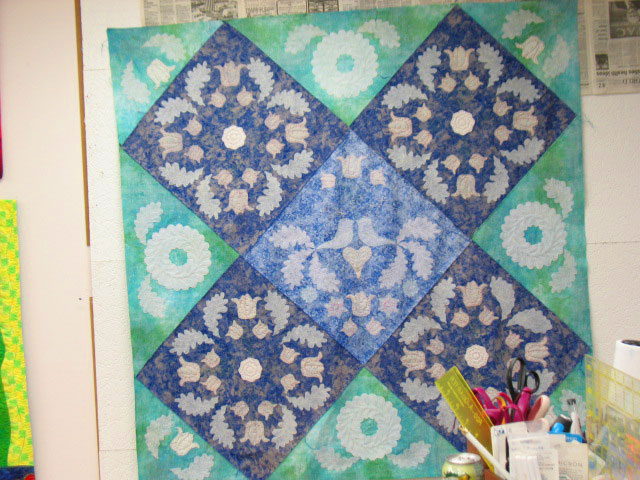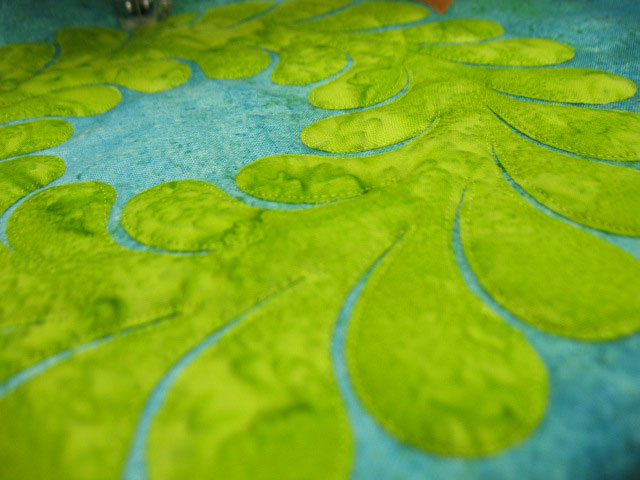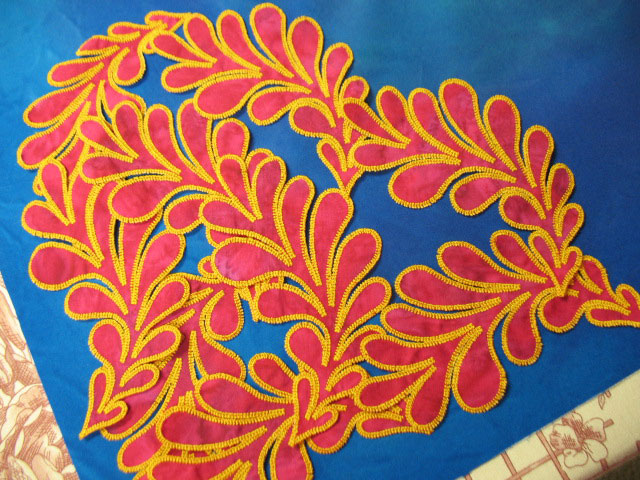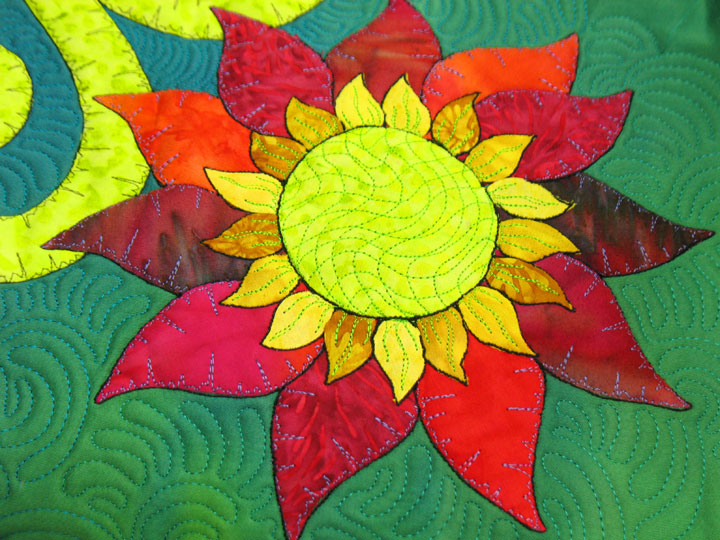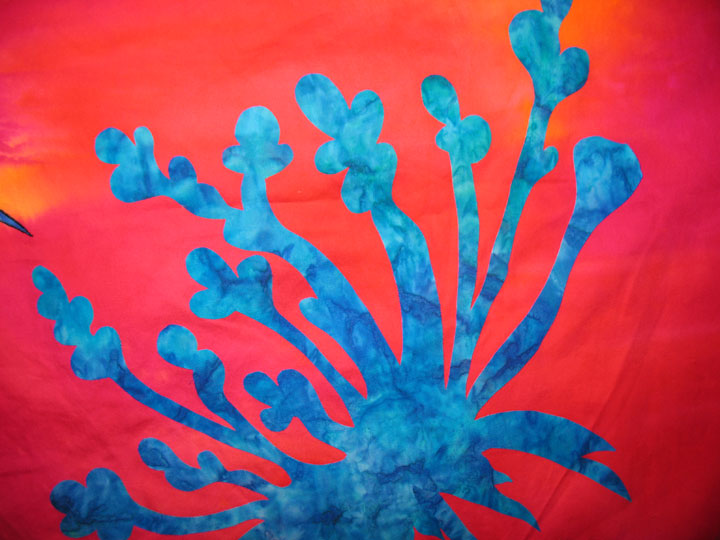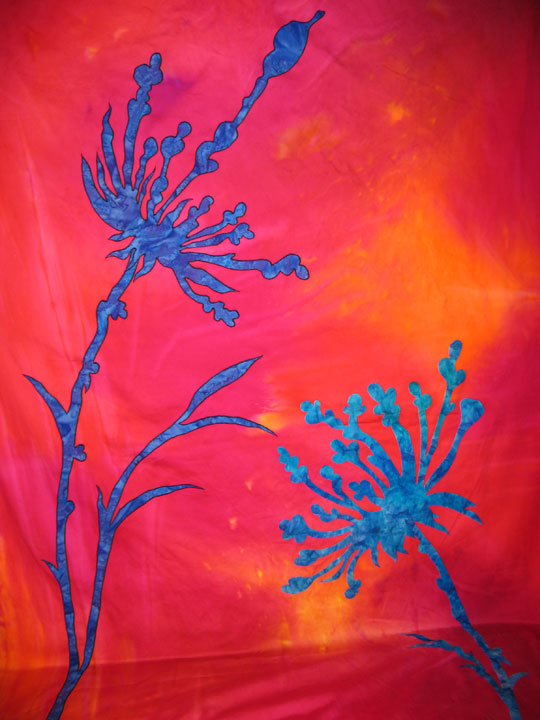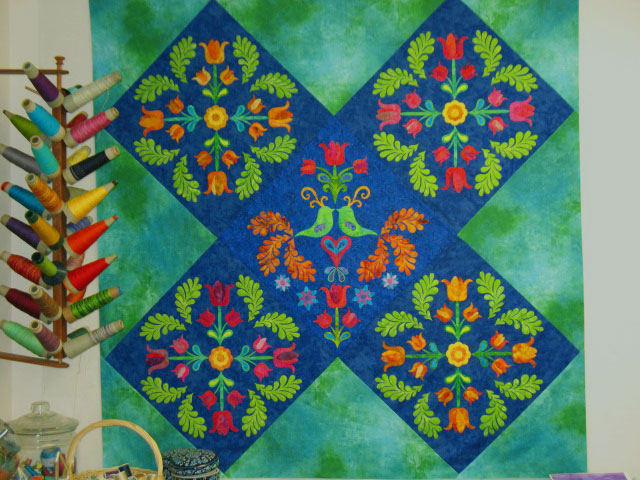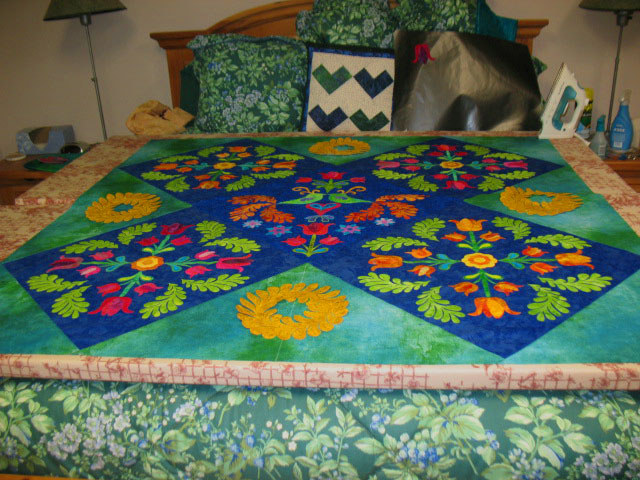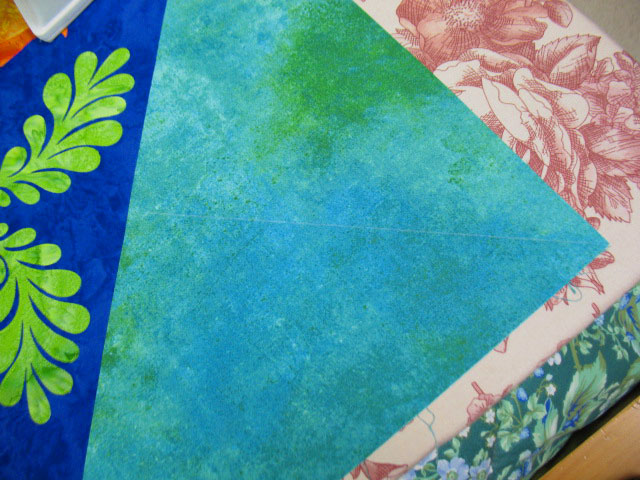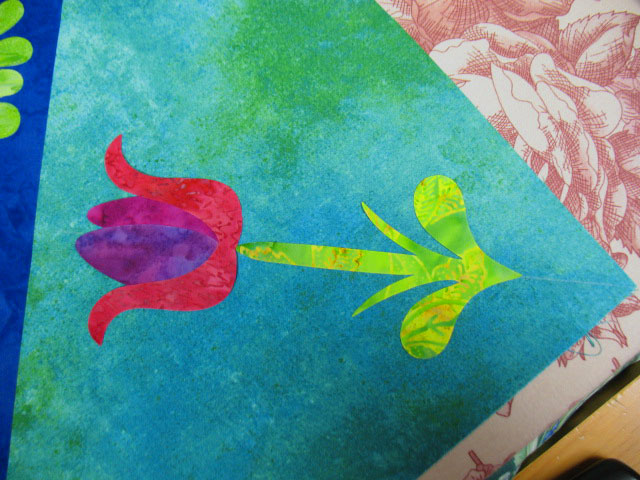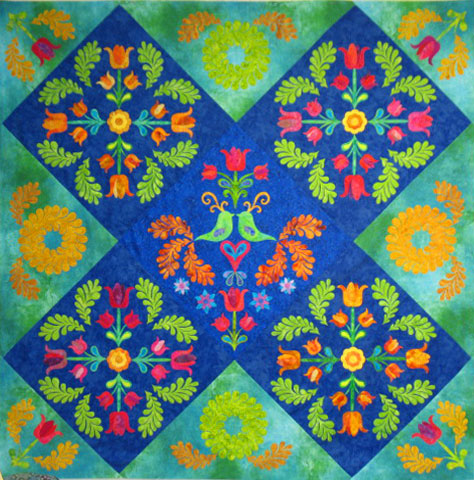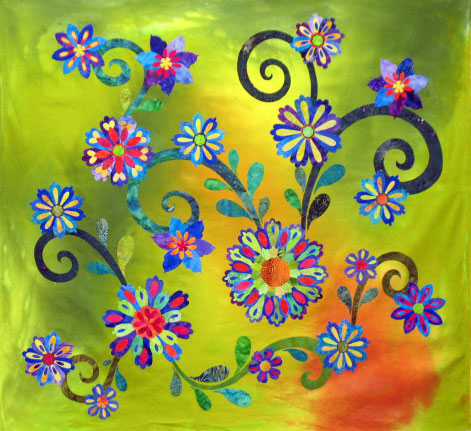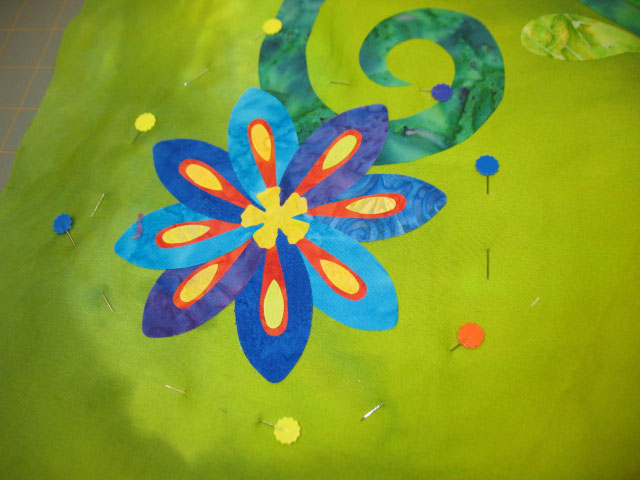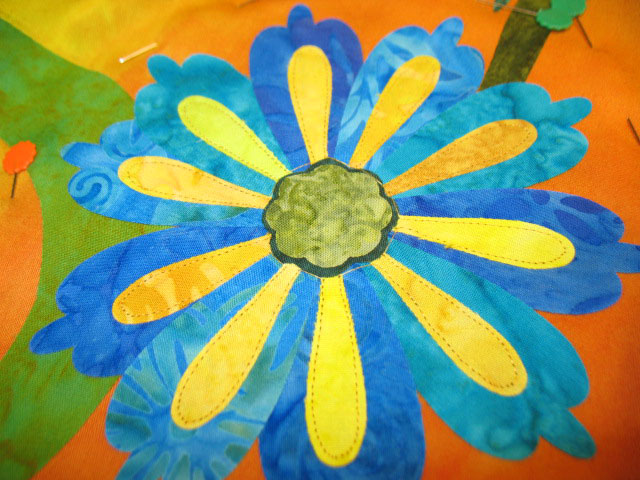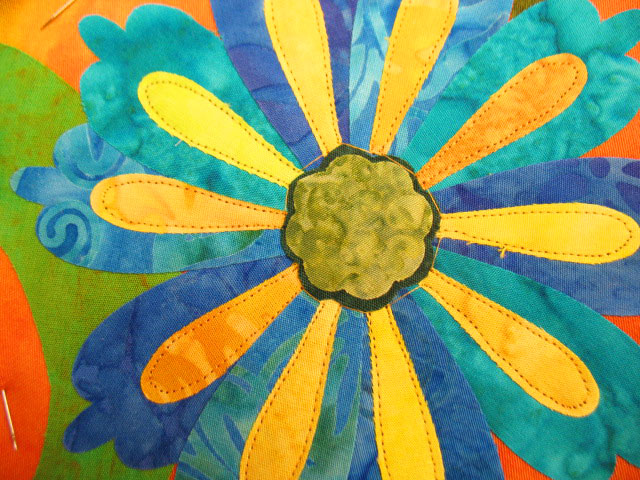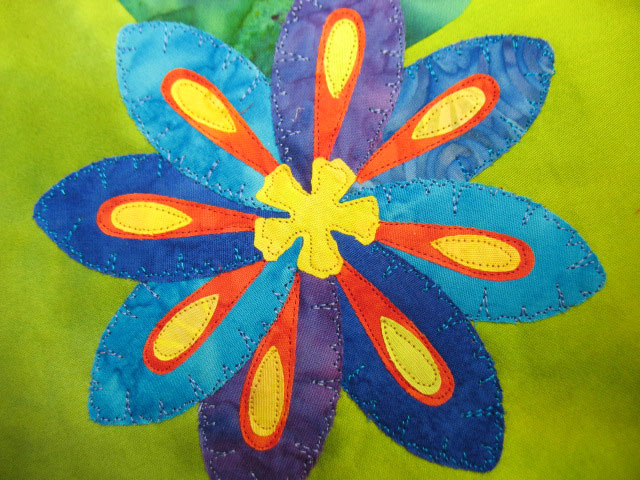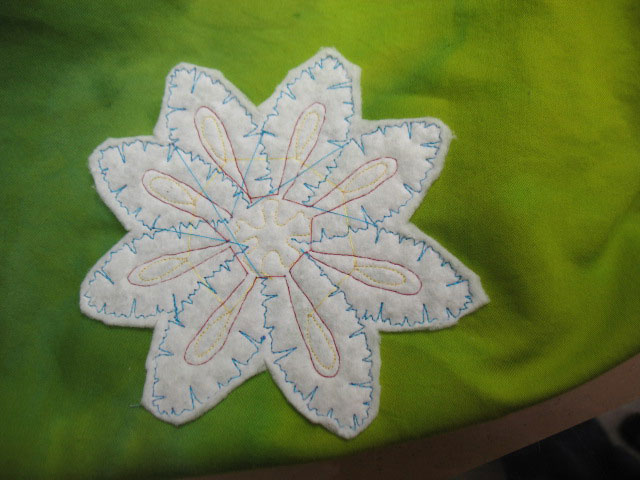Spinning My Wheels
My hands have been in so many different projects over the last 5 days that even I am dizzy! I am scrambling to get some large volume dyeing completed before the weather turns too cold. I can dye all winter in the garage, but I need lots of larger yardage pieces (i.e. at least 2 yards each) and there isn’t space to dye large yardages unless I’m working outside. These are Egyptian cottons that are great for piecing and every once in awhile I’m throwing in a smaller piece of another fabric type to use up the end of a dye color:
I finished all the free motion embroidery and trapunto on the tulip quilt about 1 1/2 weeks ago and had to wait to bring it to NC so I could spray baste it. Here’s a shot of the backside (the colors are very washed out looking as these are all printed commercial fabrics) and you can see that there’s a lot of trapunto. Every applique shape except for the stems are trapuntoed, and those are free motion embroidered. I used 5 different types of batting for the various trapunto shapes:
I’ve just begun the first phase of the quilting, and this involves zipping around all the applique pieces with invisible thread (Monopoly by Superior Threads). I always find this phase very relaxing and it gets my head in a very good place. One of the battings I used was a thin fleece batting and I am loving the texture it creates. You can get a bit of a feel of the trapunto effect on this wreath, and remember, I have done no background quilting at all here, and that will make all trapunto more pronounced:
The other thing I have been doing is spending loads of time trying to teach myself how to digitize. I am not a computer person at all, but I can’t believe how much I’ve learned! I know that many quilters really have no interest in machine embroidery, but all I can say is you have no idea what you are missing out on! For myself, I really think that a melding of my free motion work + machine embroidered applique=incredibly exciting horizons for my future! Here’s a peak into what machine embroidery can do for my feathers…wonder where these babies will end up?
Stay tuned! I’m hoping to have my first machine embroidered applique quilt pieced in the next few days!




